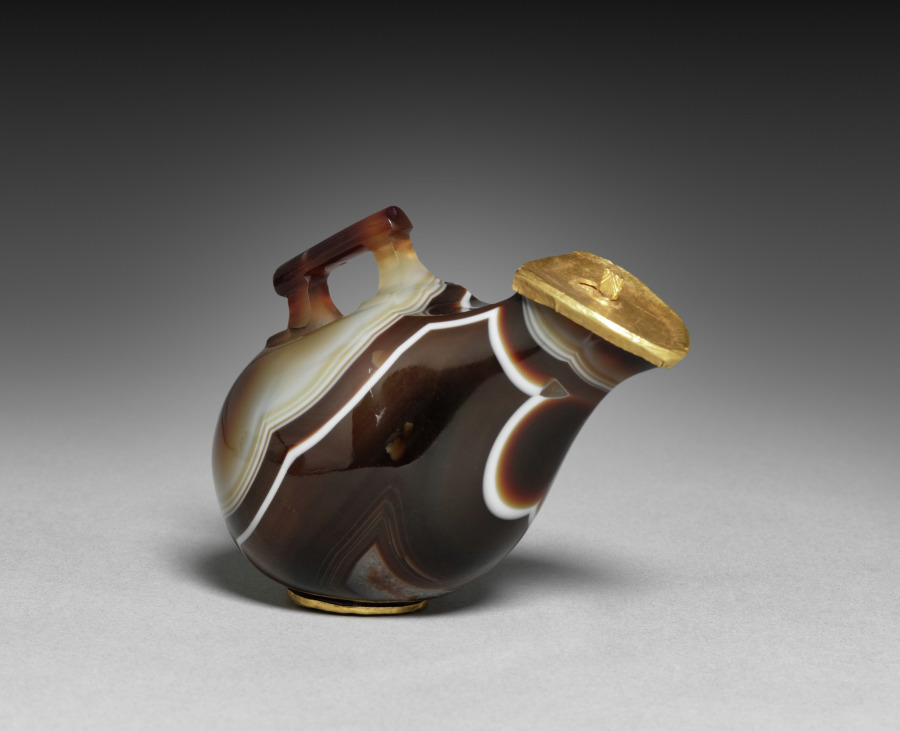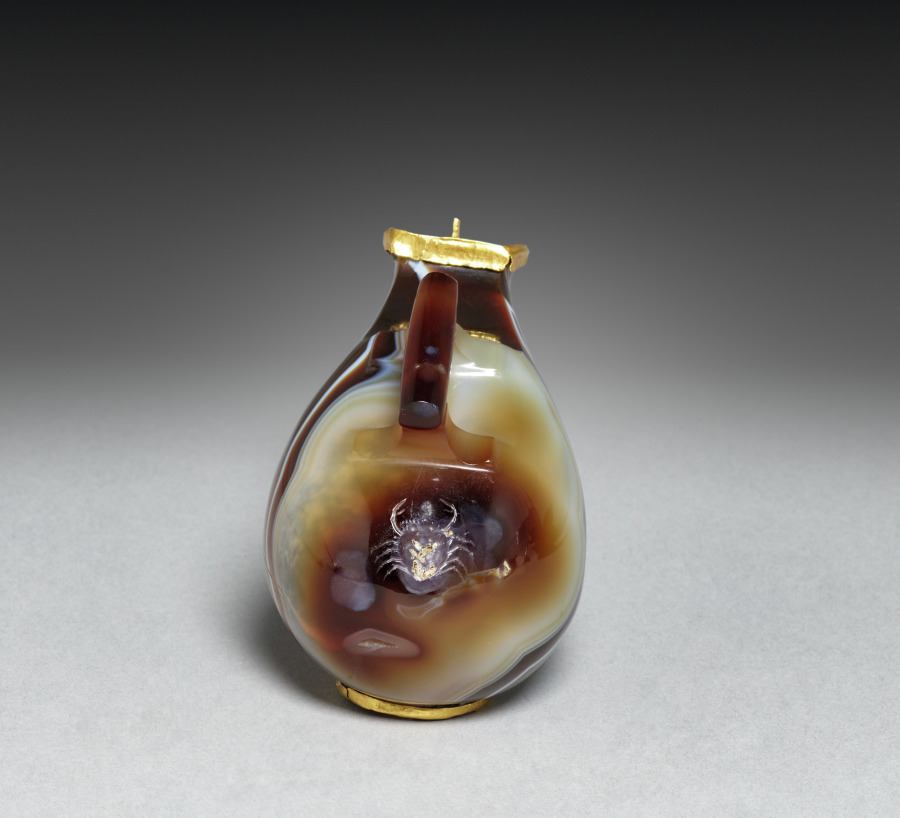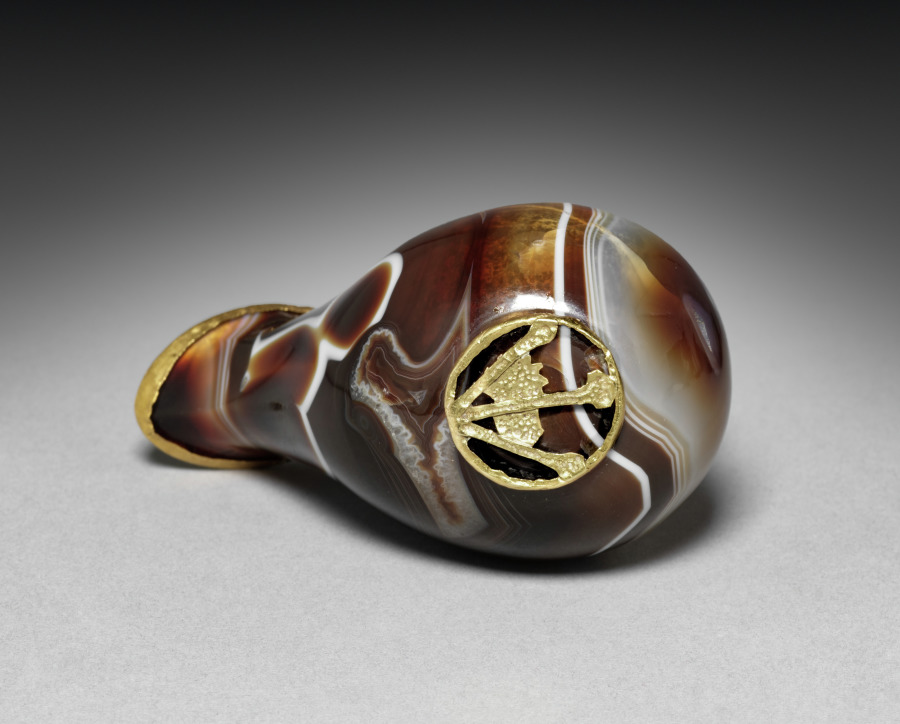Hard stone polished to a lustrous shine is irresistible (to me, at least, and probably also inquisitive magpies). In Cleveland’s Museum of Art, a relatively large banded agate has been painstakingly carved into a relatively tiny (only 6.5 cm tall), functional pouring vessel. It is also a wonderful example of Greek and Egyptian traditions blending during the Ptolemaic period, when the successors of Alexander the Great reigned supreme.
Agate is hard, very hard: clocking a 7 on the Mohs scale (a bit harder than a modern steel nail), and carving it into a hollow, complex shape with a tapered spout is no mean feat. But it was a technique well-honed in Egypt for thousands of years before the Ptolemies got there (with abrasives and elbow-grease…).



The vessel’s shape is entirely Greek, the modern appellation ‘askos’ referring to its baggy, wineskin-like shape. Thin walled, and elegantly proportioned, it is fashioned from a single piece of stone, engraved with a small crab at the base of the handle, and further embellished in gold sheet with a detachable spout-cover and openwork base in the form of three papyrus stalks. A delectable little object: luxurious in terms of materials, degree of difficulty, and sheer impracticability!



